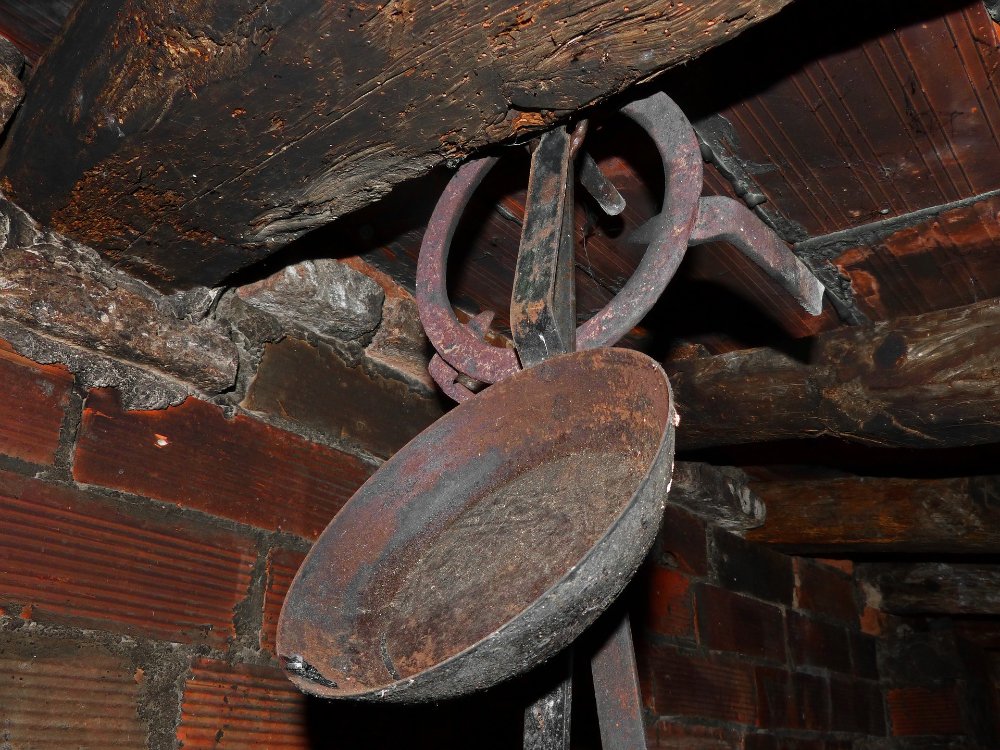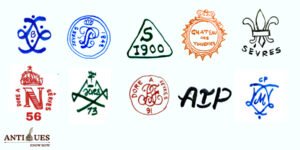We know mommies love to trade their old cookware for a few bucks at the barter. But trust me, exchanging your grandma’s cast iron skillet may cause you a loss instead of a gain! Just look at your pan’s handles and rings. If they seem old, your piece might be worth more than you think!
So today, I’ll tell you about seven important factors to check before selling your skillet. No, you don’t need any experts here! Just get your magnifying glass, and I’ll help you price your pan!
Key Takeaways
- If you want an old, high-value skillet, look for two spouts, joint handles, and burn marks on the surfaces.
- Bold red, green, and white pans are new and enameled. So, if you want high returns, stick to a black, flat-bottom skillet!
- You have three skillet options – Wok, Cake, and Bread. Of these, the wok ones are the most precious, while others are cheaper.
- Pick thick, 8-lbs skillets with visible signs of rust and warp for the best value!
Key Identification Features Of Antique Cast Iron Skillets
Old cast iron skillets are like thick, joint versions of the usual iron pan! But rotate the pan’s base, and see if you find any heat rings! If yes, they are old and precious! If not, they aren’t antique, and you can trade them!
Are you still confused if your skillet is antique or not? Look for these features:
- A 5 – 6 inch slash or Gate mark with leftover casings
- Ghost marks (faded marks) on the handles, indicate the maker and origin
- Single-joint pans with heavy, grooved handles and two spouts on the sides
- 4 – 12 lbs bodies with uneven height and thickness
- Coal marks, faded bases, and blackish walls from burning
Evolution & History Of Cast Iron Skillets
How do you imagine a skillet to look? Like a pan, right? But, the first cast-iron skillet was more like a cauldron with high walls and feet. But, they weren’t common due to their heavy weight and cooking time. You’ll have to search harder for these rare 1700s models.
It was in the 1800s that iron smiths decided to make skillets more usable. They trimmed the walls and added handles, and even tried adjusting the sizes. But this stripped the skillets of their unique shapes, making them cheaper!
The late 19th-century skillets are small and light. They don’t have uneven walls and heat rings. Rather, you’ll see screw joints, enamel, and removable designs with these. But these are not rare or handmade. So, you’ll get them in your budget!

3 Types of Vintage Cast Iron Skillets (With Values)
Different types of vintage skillets have different values. So, let’s take a look at three main types of antique iron skillets, along with their estimated values!
1. Wok Skillets
Wok Skillets are like the tempered cauldrons in Harry Potter’s potion class! They are large, rounded, and have 4 mm rings that fit on old wood stoves! You’ll also see some hand finishes and warped lids with them.
I also advise looking for metal or ‘HF’ stamps on their bases. If you see them, you can price your skillet for $700 – 800. If not, the value stands at $600 – 650.
2. Cake Baking Skillets
Cake-baking skillets look just like a flower pendant! They have a central, circular steamer with a 5-cup-cake bowl and a rim on the sides. Plus, you get them in oxidized finishes with top enamel for baking. But they aren’t unique and cost $80 – 100.
3. Bread Skillets
Just as the name suggests, bread skillets are for breads and pizzas. So, they have 6-8 sections with a central heating system. Most are 8-9 inches wide, but you get 10-15 inch models as well!
But bread skillets are difficult to clean and coat. They rust with time, lowering the value to $100 – 120.
8 Factors to Identify & Value Old Cast Iron Skillets
Now that you know the basic value of your cast iron skillet, let’s break it more! Here, we’ll value antique skillets based on their age, brands, colors, shapes, and more!
1. Manufacturing Date & Age
If you are fascinated by old, handmade things, I suggest looking for cast iron pans from the 1700s! These crude pans have uneven edges and walls. They are also very sturdy and unique, perfect for a souvenir!
But if you long for luxurious, branded pieces, switch to the 1800s models. These are thin and come with a handle and spout for handling. So, they are precious due to their half-hand, half-machine construction.
Next are the 1900s models. Frankly speaking, there’s nothing unique and handmade about them. So, the low value of $50 – 60.
Read on to learn more clues to track the age!
How Do You Identify Old Cast Iron Skillets from the 1700s?
Identifying the 1700s models is easy. Start by checking for a round, kettle-like shape with 3-4 legs and spouts. Then you can look for 4-5 mm heat rings and see if you get a trademark at the base. If yes, your pan is from the 1700s and is worth $1000 – 1200.
How Do the 1800s Iron Pans Look?
If your cast iron pan shows a single-piece handle and 2-3 notches, it’s from the 1800s. You’ll also see a T-shaped rivet with pointed spouts on each side. Plus, they will be more light and portable, costing $300 – 800.
How Do You Know If Your Pan Is from the 1900s?
If you see galvanized iron finishes, your pan must be from the 1900s! Most of these also have a ‘Made in USA’ label or patent number that tracks their make. So, you can price them for $50 – 100, depending on the age.
| Year | Age | Patent Number | Skillet Type | Average Valuation |
| 1935 | 88 years | US1176720A | Cooking Skillet | $100 – 120 |
| 1890 | 132 years | US433231A | Frying Skillet | $500 – 600 |
| 1900s | 122 years | CN2061428U | Edging Cast Iron Pan | $60 – 70 |
Pick cast iron skillets with a grooved or hammered iron finish for an old make.

2. Skillet’s Shape
Antique skillets were not always round and pointed! In fact, you get them in various shapes – flat, square, spider! Of these, the deep, flat pans are one of the oldest and most precious. But, the fancy, arched shapes are new and cheap.
And if you want an 1800s skillet of a rare shape, find a square or oval one! This will also be handmade and costly, at $200 – 250.
| Cast Iron Skillet’s Shape | Average Valuation |
| Poshnet (Splayed Bowl with 3 legs) | $800 – 1000 |
| Flat Bottom (Tumbler-like) | $400 – 500 |
| Deep (Frying) & Round | $300 – 320 |
| Shallow & Pointed | $250 – 300 |
| Square & Oval | $200 – 250 |
| Spider Shape | $150 – 200 |
| Arched & Round Handle | $90 – 100 |
| Small, Pan-like | $50 – 60 |
Get skillets with grooved, flat, or strip-like handle shapes for the best returns.
3. Colors & Finishes
If you want an old, handmade skillet, go with the 1700s brown or black pans. You might even see white, beige, or silver skillets at your shop. But they are newer (1900s) and enamel-coated. So, you won’t get more than $100 on resale.
But if you are still fascinated by their bold colors, here’s a table to show each color’s worth!
| Cast Iron Skillet Color | Average Valuation |
| Brown, Black, Bare Metal | $200 – 250 |
| Silver or Chrome | $150 – 200 |
| White or Beige | $90 – 100 |
| Red or Pink | $70 – 80 |
| Blue or Green | $40 – 50 |
| Yellow, Orange or Gold | $30 – 40 |
4. Brands & Manufacturers
If you want sturdy, high-quality products, then branded pans are the way to go! So, if your old skillet shows any signed marks by ‘Atlanta,’ ‘Vollrath,’ or ‘Wapak,’ you can expect a value hike of 15 – 20%.
But brand marks aren’t just visible anywhere. To check if a piece is branded, look at its spout and bases. In many cases, you might get two logos – one of the maker and one of the white-labeling brand. If that’s the case, you can price your pan for $500 – 600.
Here are some antique cast iron skillet brands for a better idea!
| Old Cast Iron Skillet Name | Manufacturer | Antique Skillet Shape | Average Valuation |
| Large Logo Skillet | Griswold | Shallow and Pointed | $1600 – 1800 |
| Hollow Ware Skillet | Wapak | Small, Pan-like | $1300 – 1400 |
| 11 Cast Iron Skillet | Favorite Piqua Ware | Shallow and Pointed | $850 – 900 |
| Black Lock Cast Iron | Lodge | Arched & Round Handle | $690 – 700 |
If your skillet lacks brand logos or signs, look for a slash mark on its base. This mark shows a superior 1700s make and raises the value by 10 – 12%.
5. Skillet Numbers
If you look at your antique cast iron skillet’s base, you’ll always see embossed letters and numbers. Well, they are not your pan’s diameter! In fact, these numbers indicate it fits with a wood stove. Like, a #7 pan will fit a 7-number gas, and so on.
Of these, the #8 stoves are very common and cheap. But those with a #10 or #14 number fetch about $400 – 500.
6. Spouts
Did you see a single-spout skillet in your antiques shop? Well, then, it’s better to stay away from it! It’s because antique skillets always have two spouts – one each on either edge of the pan. So, any other model will be newer and cheaper.
Always look for spouts with a round, elongated finish for the best returns.
7. Weight
Old skillets are undoubtedly thick and double-layered. So, how do you know if the inner material is safe and rust-free? Well, just check the pan’s weight!
If the pan weighs 6 – 12 lbs, you can buy it for $200 – 600 right away! But, if it weighs less, it may be a new, enameled pan. So, choose wisely!
8. Signs of Aging – Rust, and Warp!
Last but not least, inspect the skillet visually! For this, turn the base upside down and check the signs of rust and burning. You’ll be able to see a patina from the oxidized coal and fire. You might also notice some warped edges, raising the value by 12 – 15%.
What Is the Original Color of an Antique Cast Iron Skillet?
Antique cast iron skillets were originally metallic gray. But today, because of rust and burning, you’ll always get slightly black or brown skillets.
How Do You Save an Antique Cast Iron Skillet from Rusting?
You can coat your cast iron skillet with any seasoning or canola oil to save it from moisture. Similarly, rinse it with vinegar to dissolve the rust, then dab it with a paper towel for a spick and span pan.
How Can You Tell If Your Old Cast Iron Skillet Is Ruined?
Flash a torch on your cast iron skillet. Do you see any holes or cracks on its surface? If yes, it’s best to let go of it, as these holes can lower the value by 5 – 6%.
It’s not always the rusty and faded skillets that are old; you can look for many other factors, like two spouts and cauldron shapes, for an old make. So, now, you can value your item yourself!
And if you want help with more cookware and tableware items like ‘antique knives’ and ‘antique glass pitchers,’ look no further!
Note: This article is intended for informational, educational, and entertainment purposes only. Some images are illustrative and may not represent actual brands, products, or related entities. All trademarks, product names, brand logos, packaging, and other intellectual property referenced remain the exclusive property of their respective owners. Any brand mentions or references are provided solely for descriptive and educational context and do not imply any formal or commercial association.









